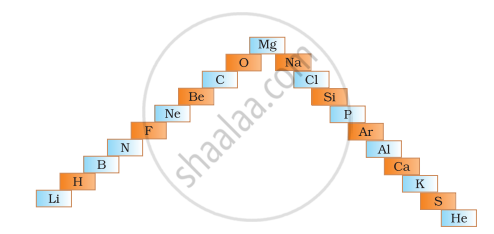Advertisements
Advertisements
प्रश्न
Moving from left to right, the size of the atom decreases.
पर्याय
Right
Wrong
उत्तर
Moving from left to right, the size of the atom decreases- Right
APPEARS IN
संबंधित प्रश्न
Answer the following in respect of element `31/15 P `
Give its formula with chlorine?
Give the trends in atomic size on moving across the period left to right.
Why is the size of neon greater than fluorine?
Arrange the following in increasing order of property indicated
I, I+, I- (atomic size)
The metals of Group 2 from top to bottom are Be, Mg, Ca, Sr and Ba. Which one of these elements will form ions most readily and why?
Arrange the following as per the instruction given in the bracket.
Mg, Cl, Na, S, Si (increasing order of atomic size)
The changes in the properties of elements on moving from left to right across a period of the Periodic Table. For the property, choose the correct answer.
The atomic size:
_______ is the distance between the nucleus of the atom and its outermost shell.
Write scientific reason.
In same period, boron and oxygen elements have different atomic size.
The electronic configuration of metal A is 2, 8, 18, 1.
The metal A when exposed to air and moisture forms B a green layered compound. A with con. H2 SO4 forms C and D along with water. D is a gaseous compound. Find A, B, C, and D.
When an atom of iodine becomes an iodine ion (I–) the radius will ______
Which of the following are the characteristics of isotopes of an element?
- Isotopes of an element have same atomic masses
- Isotopes of an element have same atomic number
- Isotopes of an element show same physical properties
- Isotopes of an element show same chemical properties
Write the formula of the product formed when the element A (atomic number 19) combines with the element B (atomic number 17). Draw its electronic dot structure. What is the nature of the bond formed?
An element X (atomic number 17) reacts with an element Y (atomic number 20) to form a divalent halide.
- Where in the periodic table are elements X and Y placed?
- Classify X and Y as metal (s), non-metal (s) or metalloid (s)
- What will be the nature of oxide of element Y? Identify the nature of bonding in the compound formed
- Draw the electron dot structure of the divalent halide
- In below ladder symbols of elements are jumbled up. Rearrange these symbols of elements in the increasing order of their atomic number in the Periodic Table.
- Arrange them in the order of their group also.

An element with the largest atomic radius among the following is ______.
Arrange the following in order of increasing radii:
Cl−, Cl
Explain your choice.
Which one of the following has the largest atomic radius?
Give reason for the following:
The size of a Cl− ion is greater than the size of a Cl atom.
